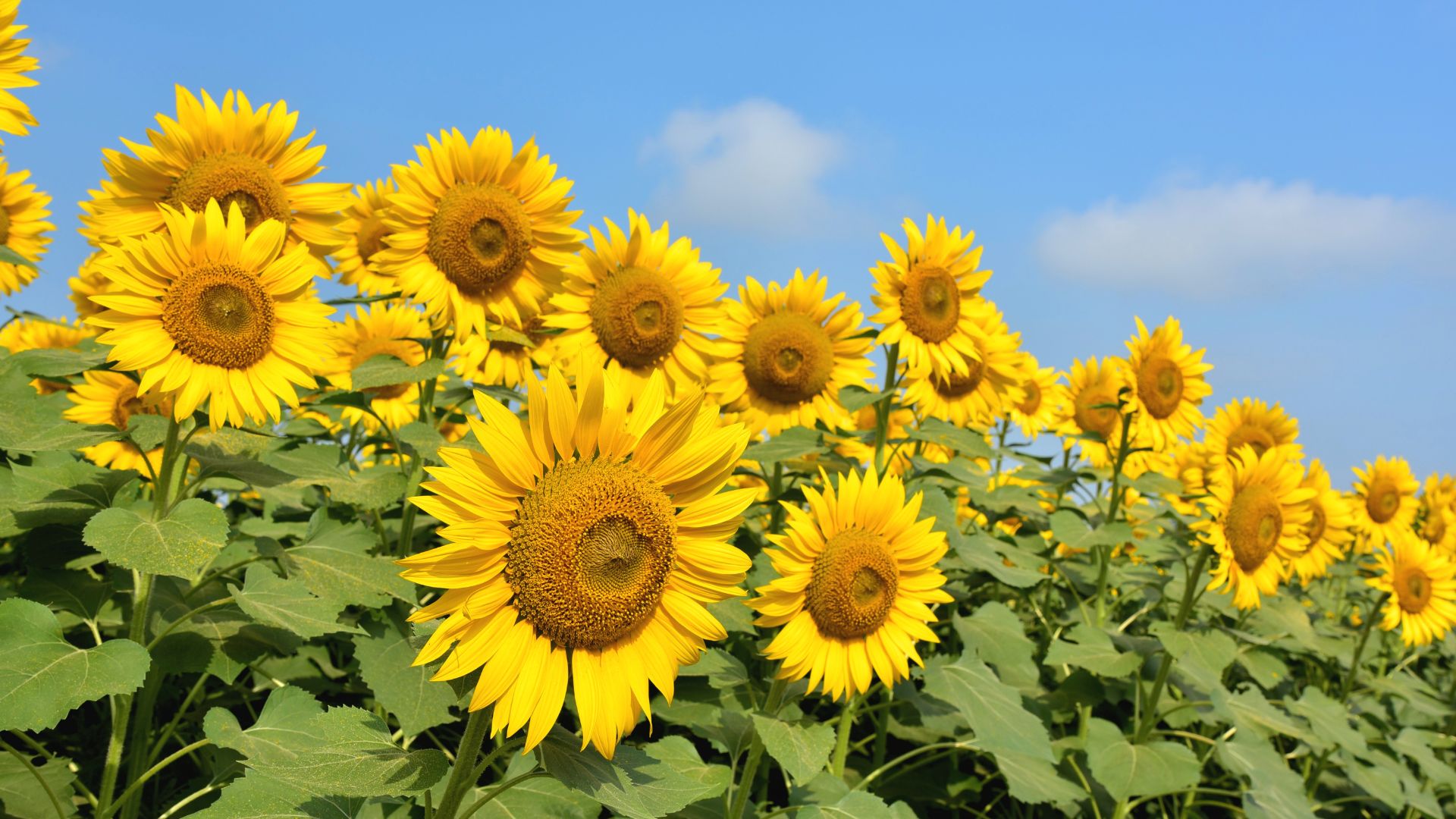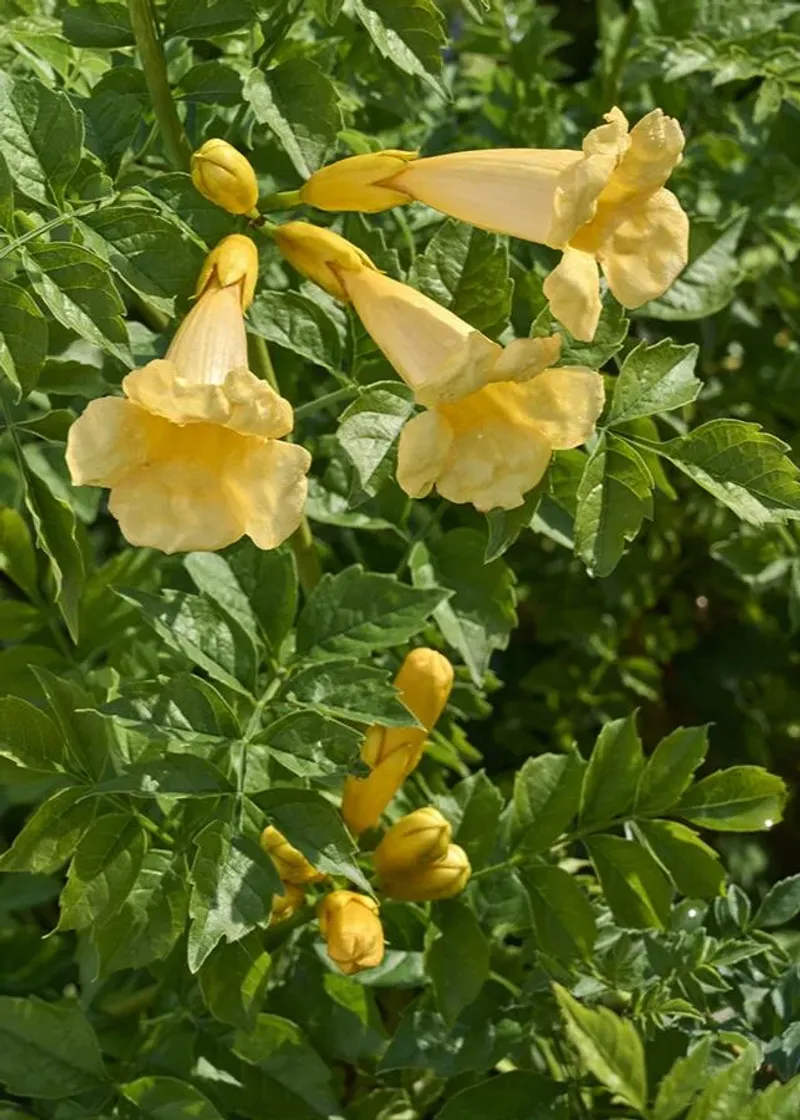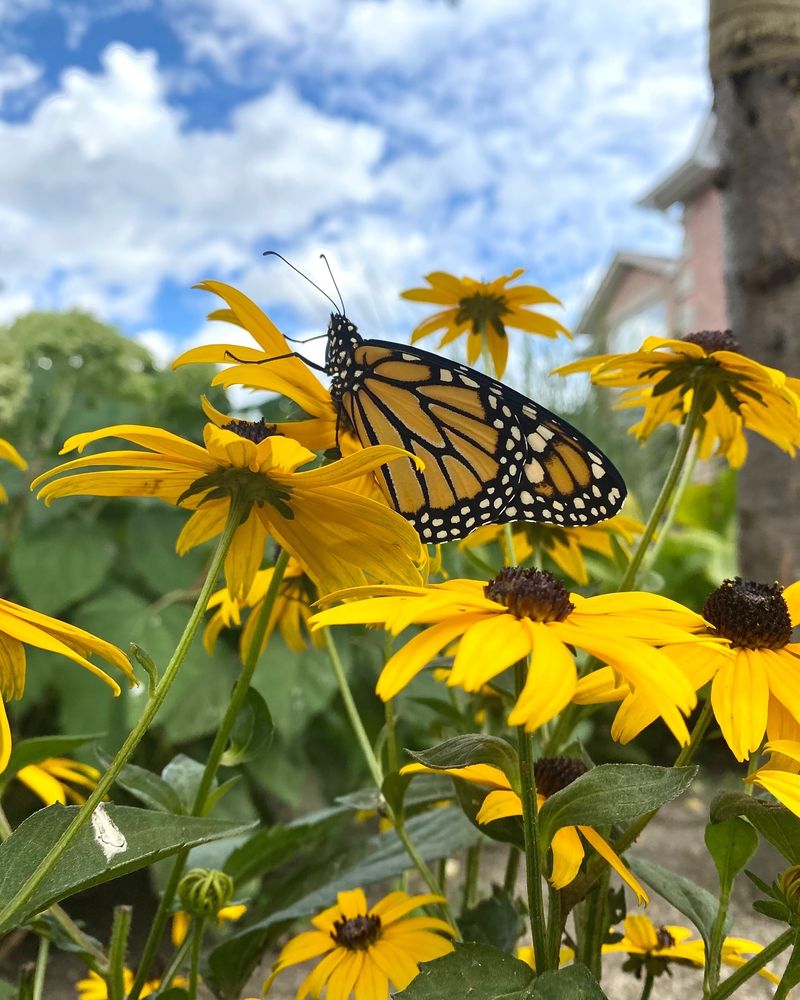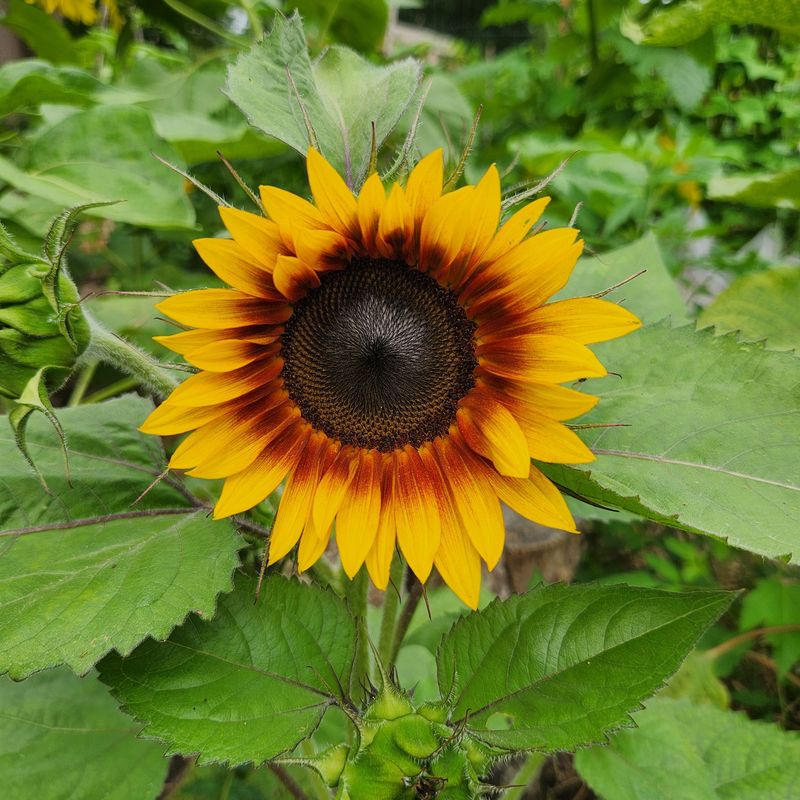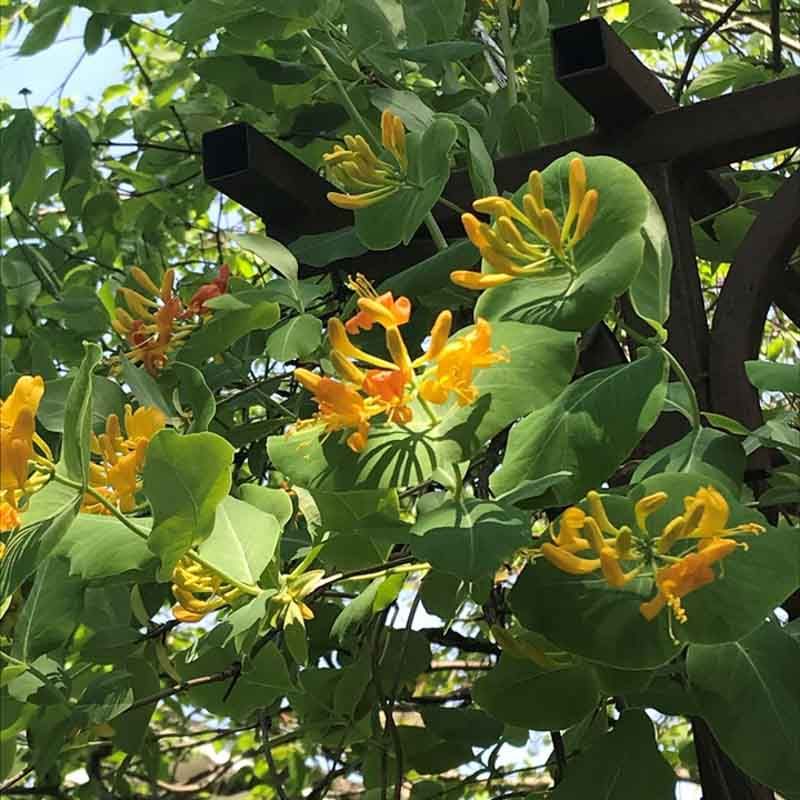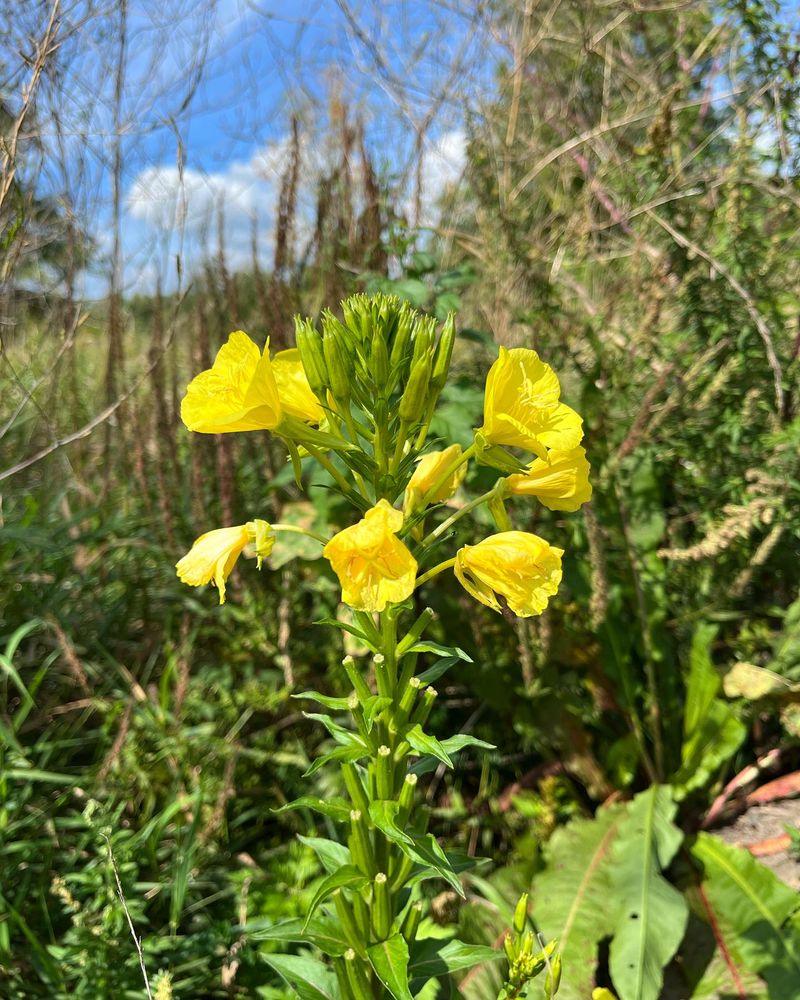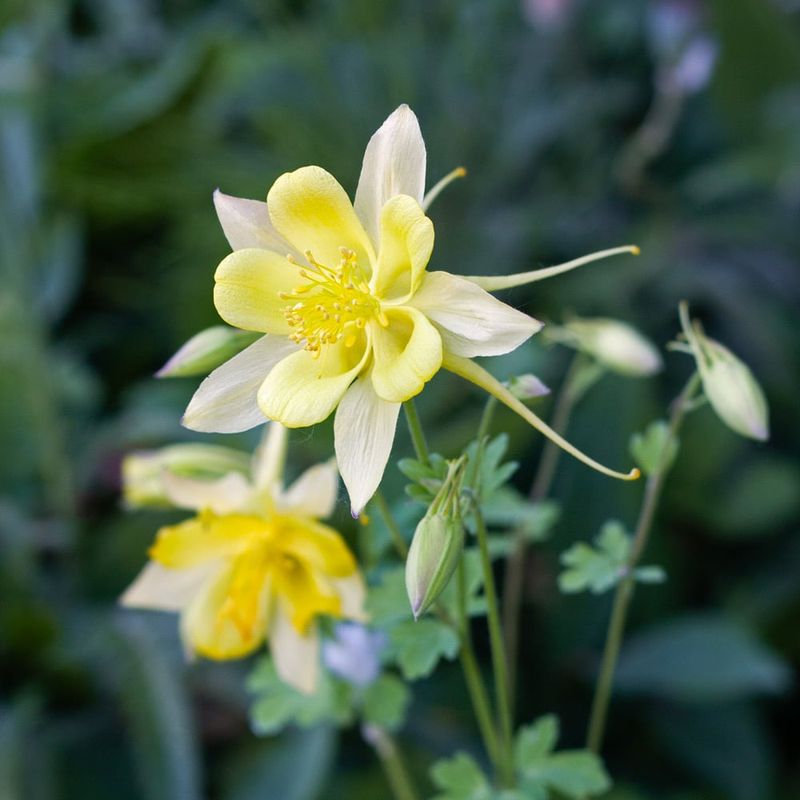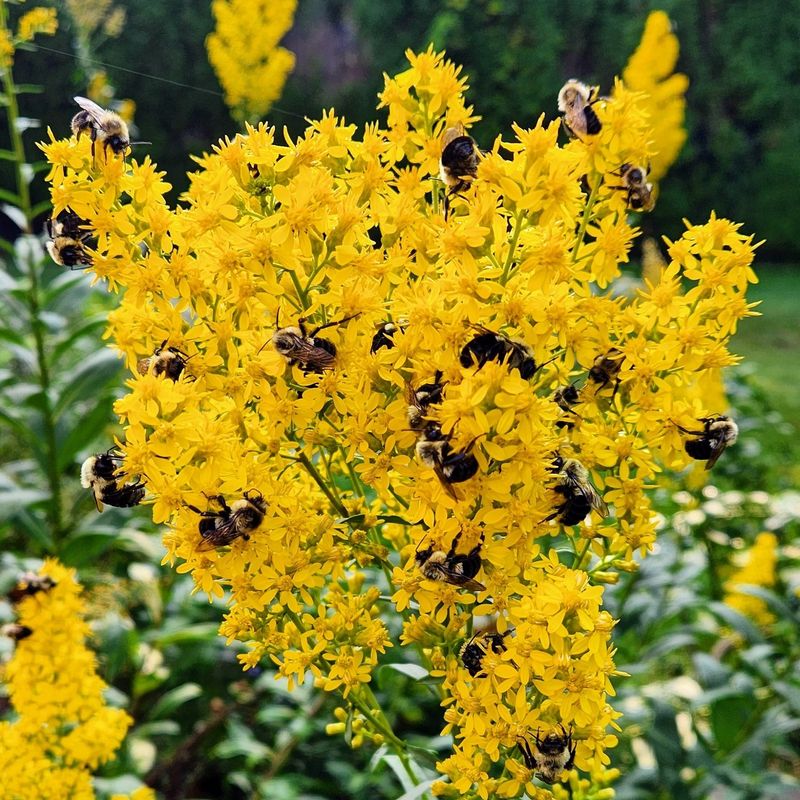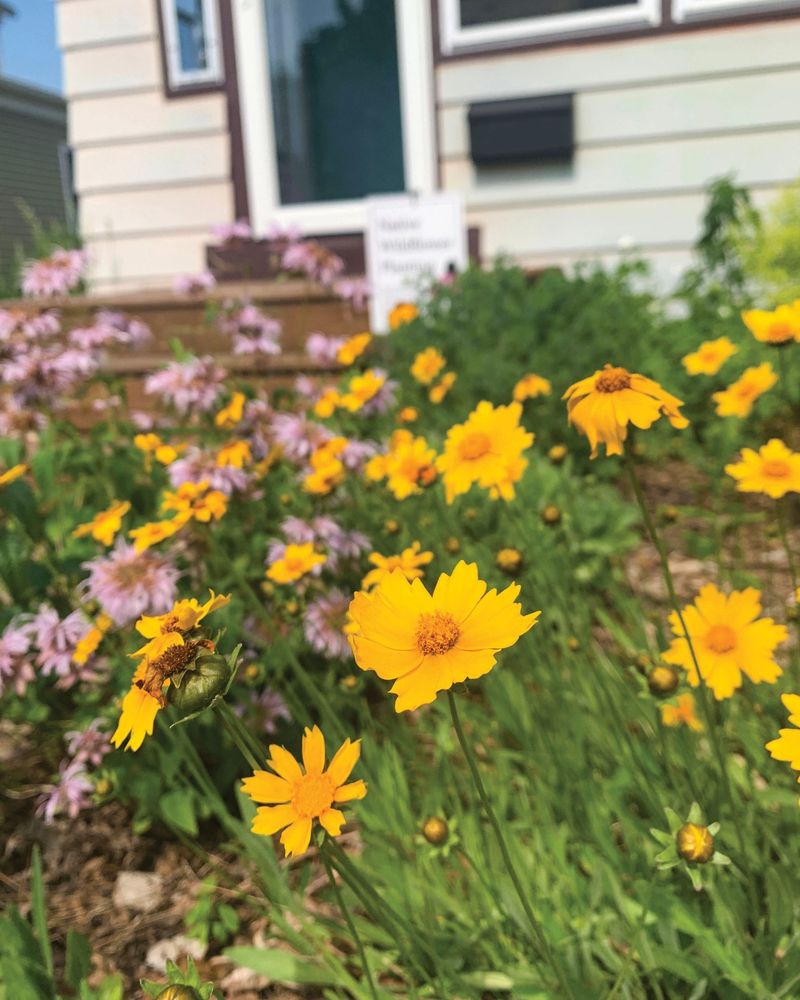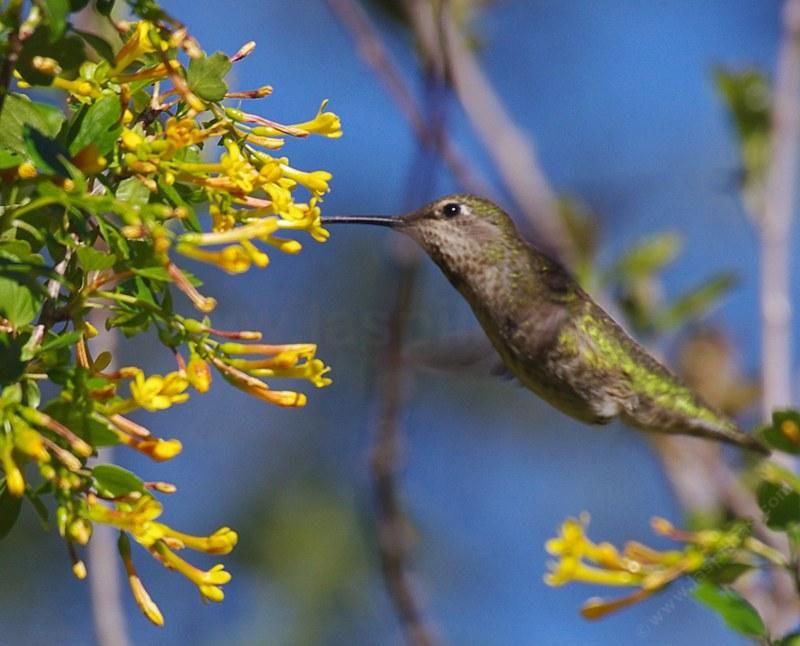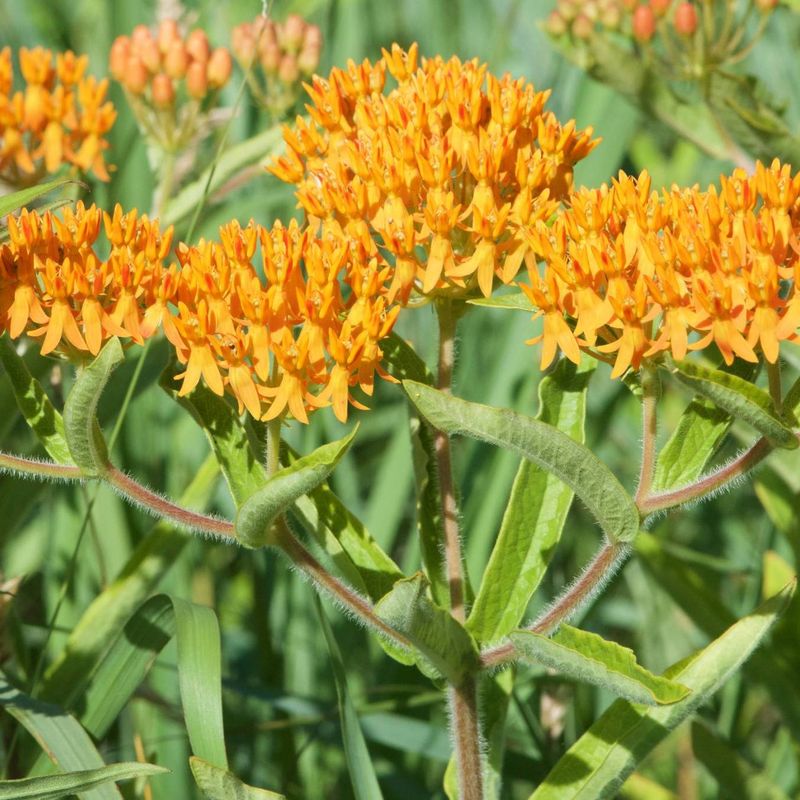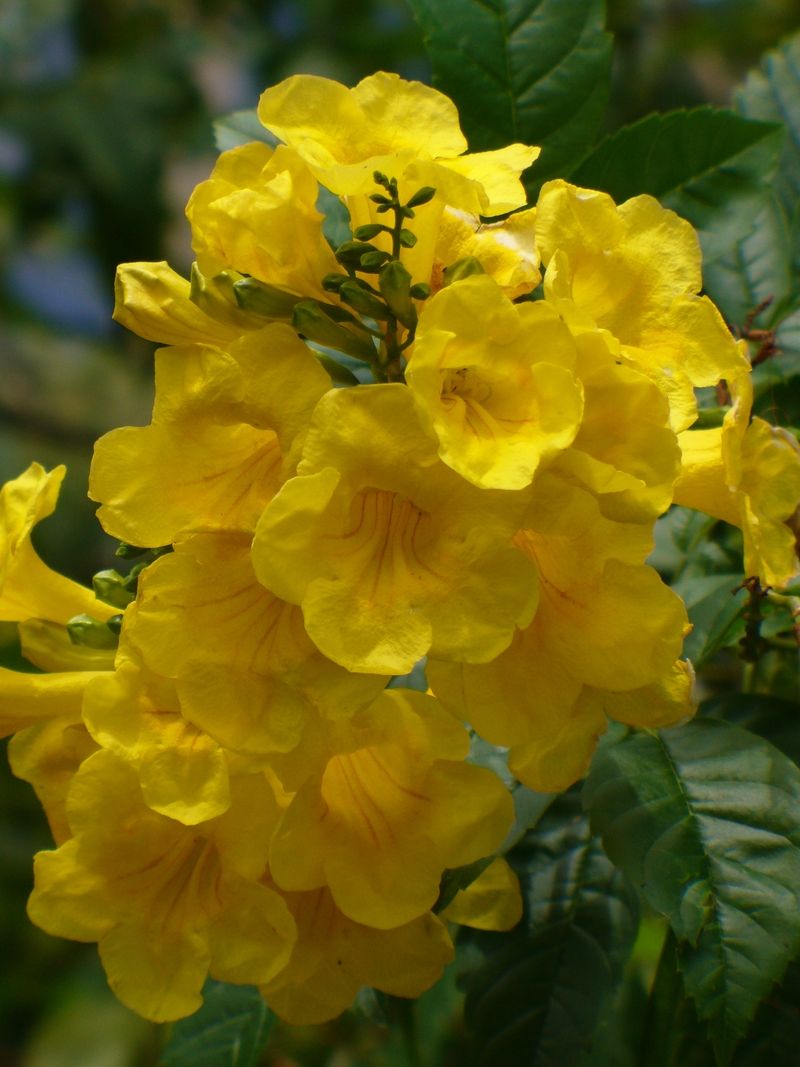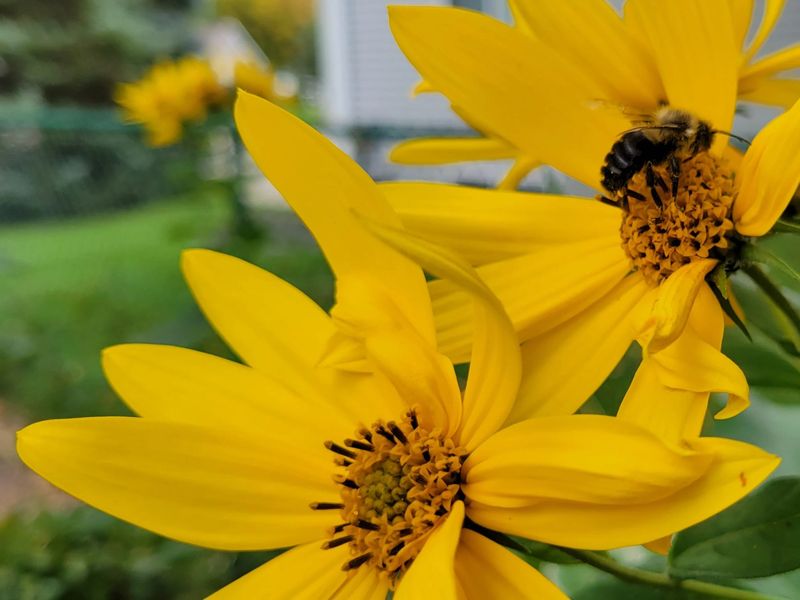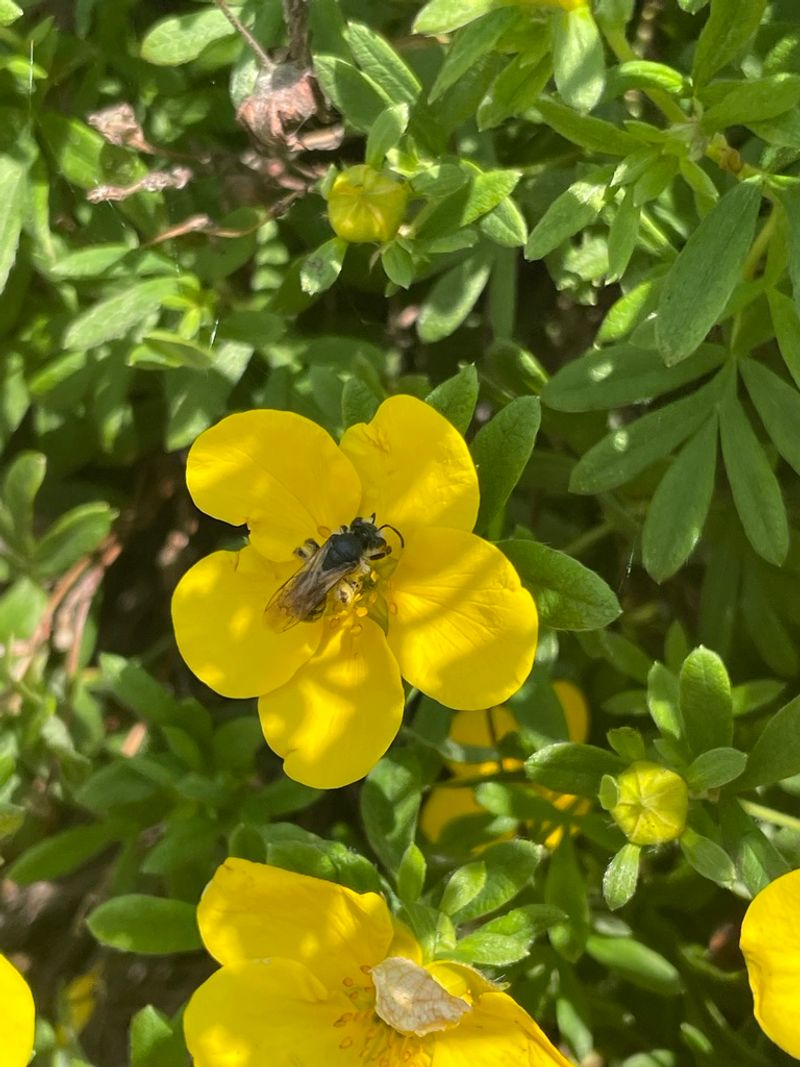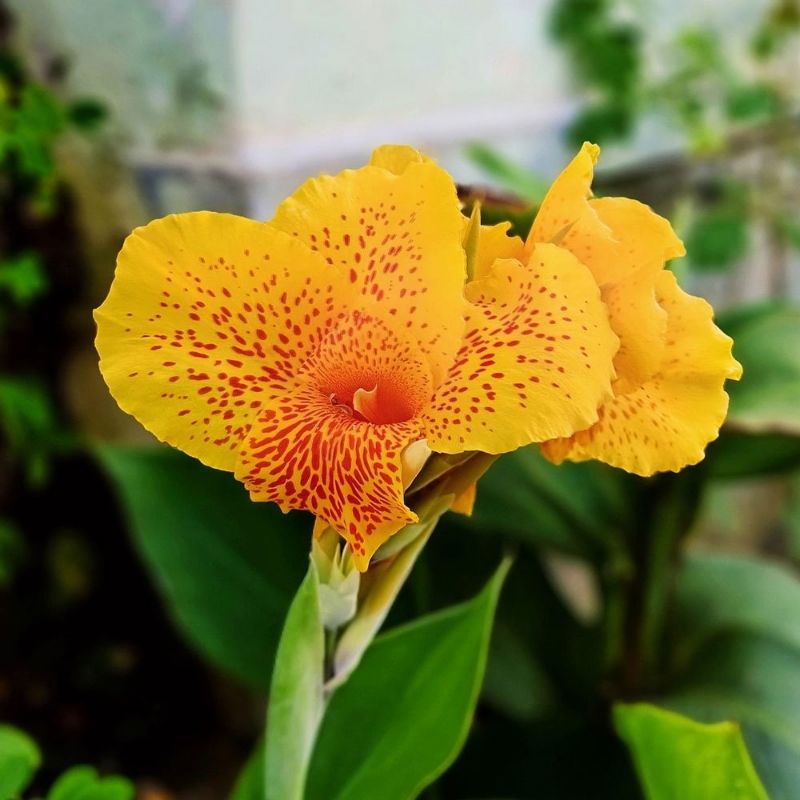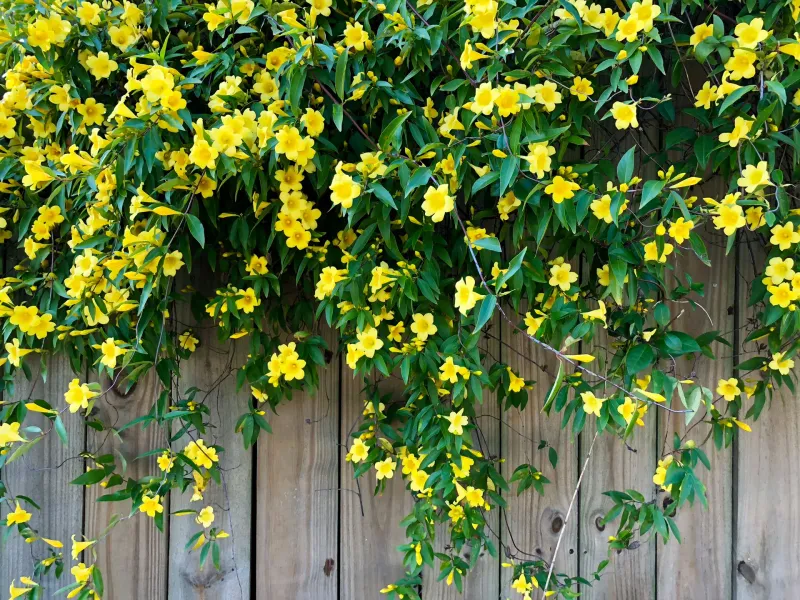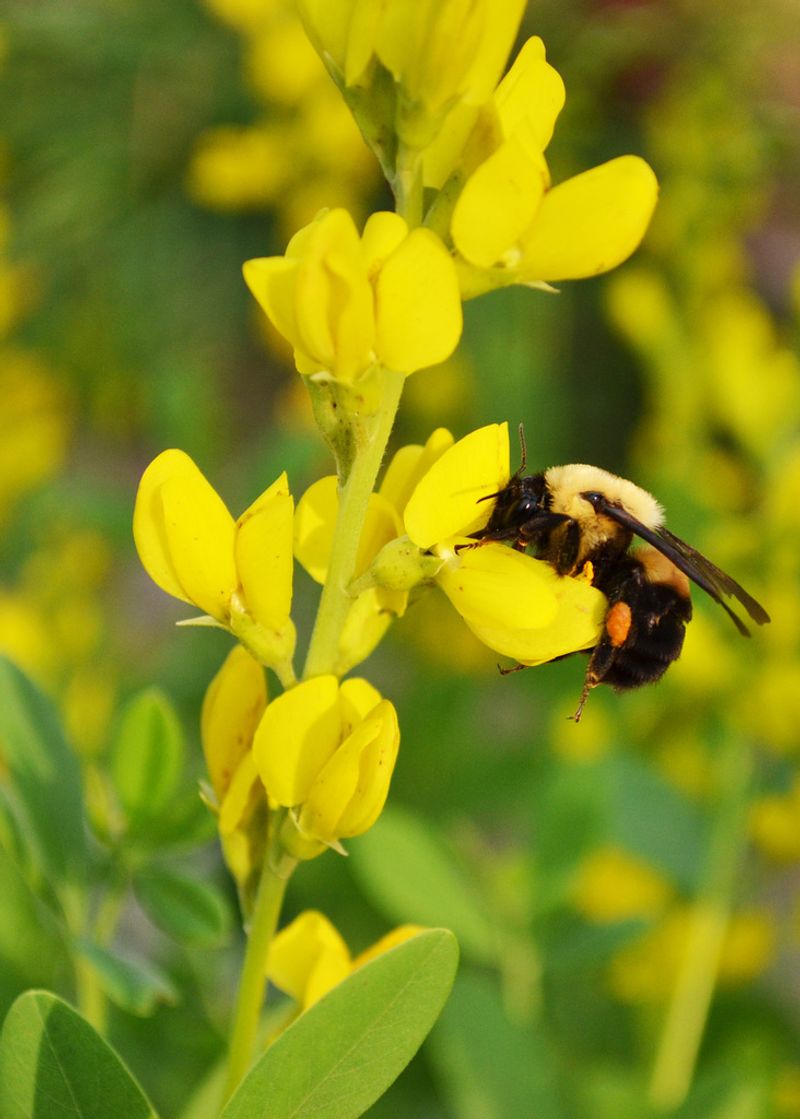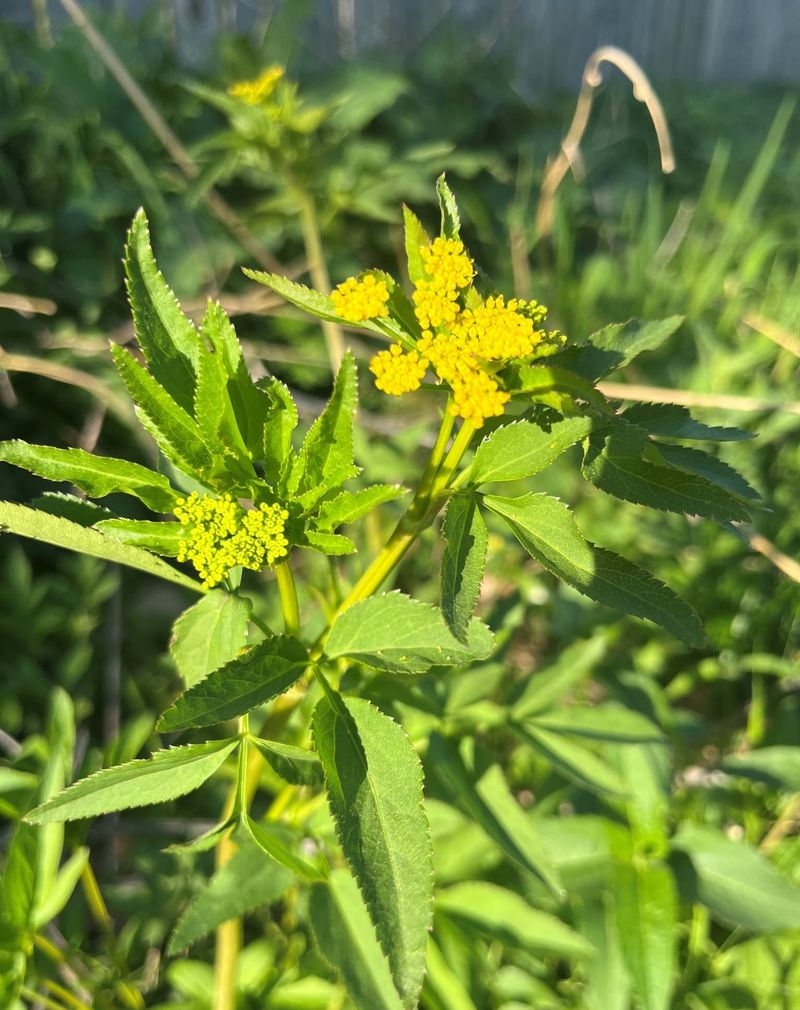Adding yellow flowers to your garden isn’t just about brightening up your outdoor space – it’s a simple way to support local wildlife too. Yellow blooms act like natural beacons for hummingbirds, bees, and butterflies searching for nectar and pollen.
I’ve watched my own garden transform from a quiet patch to a buzzing ecosystem after adding just a few of these plants. The movement and life they bring makes gardening so much more rewarding.
Here are 16 yellow-flowering plants that have proven themselves as pollinator magnets in gardens across the country. Most are easy to grow, and you’ll be amazed how quickly the visitors arrive once these beauties start blooming.
1. Trumpet Vine
The yellow variety of trumpet vine produces flared, tubular flowers that hummingbirds simply can’t resist. These vigorous climbers can reach 30-40 feet if not kept in check. I’ve found they’re almost too eager to grow in my garden!
Native to the eastern United States, trumpet vines thrive in full sun and adapt to most soil conditions. Their trumpet-shaped blooms appear from midsummer through fall, providing a long-lasting nectar source.
Plant these along a fence or trellis where you can watch the hummingbird action, but be prepared to prune regularly – they spread enthusiastically through both runners and seeds.
2. Black-Eyed Susan
Few flowers say ‘summer’ quite like the cheerful Black-Eyed Susan with its golden petals surrounding a dark center cone. Bees absolutely cover these flowers in my garden, sometimes three or four on a single bloom!
This native wildflower grows easily in most conditions and will self-seed readily, creating natural drifts over time. The daisy-like flowers bloom from early summer through fall, providing weeks of nectar for bees and butterflies.
They make excellent cut flowers too, so you can enjoy them indoors while still leaving plenty for your garden visitors.
3. Sunflower
Nothing draws attention quite like a towering sunflower nodding in the breeze. Beyond their impressive height, these garden giants are pollinator powerhouses. The large center disk is actually hundreds of tiny flowers, each producing nectar and pollen.
Goldfinches love to feast on the seeds later in the season. Last year I planted a sunflower patch specifically for them, and watching their acrobatics as they harvested seeds became my favorite morning ritual.
For maximum pollinator appeal, choose open-pollinated varieties rather than the pollen-free types bred for cut flowers.
4. Golden Honeysuckle
Unlike its invasive Japanese cousin, our native golden honeysuckle combines beauty with ecological benefits. The tubular yellow flowers produce sweet nectar that’s perfectly suited to a hummingbird’s long bill.
This woody vine climbs to about 15 feet and thrives in partial shade, making it perfect for woodland garden edges. Mine grows along a fence where it gets morning sun and afternoon shade – seems to be its happy place.
The fragrance intensifies in the evening, attracting moth pollinators after the daytime visitors have gone home. It’s like having two different gardens in one spot!
5. Evening Primrose
This one puts on one of nature’s most fascinating shows – the flowers literally unfurl in minutes at dusk, releasing a sweet lemon scent that attracts night-flying moths. During the day, bees and butterflies take over pollination duty.
This native biennial forms a rosette of leaves in its first year, then sends up 3-5 foot stalks of bright yellow blooms in the second. They self-seed easily – almost too easily sometimes!
The seeds are nutritious for birds, and the plant has traditional medicinal uses. I’ve found it thrives in poor soil where other flowers struggle.
6. Yellow Columbine
The unique spurred flowers of yellow columbine seem custom-designed for hummingbirds. Those long nectar spurs keep the sweet reward just out of reach for most insects, but perfectly accessible to a hummingbird’s bill.
This native perennial blooms earlier than many other pollinator plants, providing crucial spring nectar when food sources are limited. The nodding, bell-shaped flowers dance above delicate, blue-green foliage that stays attractive all season.
My columbines have spread themselves throughout the garden over the years, popping up in new spots each spring – always a welcome surprise!
7. Goldenrod
Goldenrod gets a bad rap as an allergy trigger, but that’s actually ragweed’s fault! These late-summer bloomers produce heavy, sticky pollen that doesn’t become airborne. Instead, it clings to visiting insects, making goldenrod one of our most valuable late-season pollinator plants.
The fluffy yellow plumes buzz with activity from August through October when many other flowers have finished blooming. I’ve counted over a dozen different bee species on mine in a single afternoon.
For garden use, look for well-behaved varieties like ‘Fireworks’ or ‘Little Lemon’ that won’t spread aggressively.
8. Yellow Coneflower
Yellow coneflower’s drooping petals surrounding a tall central cone give it a distinctive, prairie-wildflower look that’s irresistible to pollinators. The petals act as landing pads for bees working their way around the pollen-rich center.
This native perennial grows 3-5 feet tall and tolerates drought once established. Unlike its purple echinacea cousin that most people know, yellow coneflower has a more relaxed, meadow-like appearance.
The seed heads provide winter food for goldfinches if left standing. They’ve become a staple in my pollinator garden – tough, reliable, and always buzzing with activity.
9. Golden Currant
Golden currant offers a three-season show – fragrant yellow flowers in spring, tasty berries in summer, and brilliant fall color. The tubular blossoms appear just as hummingbirds return from migration, providing a welcome food source after their long journey.
This native shrub grows 6-8 feet tall and adapts to various light conditions, from full sun to partial shade. The clove-scented flowers give way to edible black berries that birds love.
I planted mine along the edge of our property as a wildlife-friendly alternative to traditional hedge plants. It’s been a hit with both pollinators and berry-loving birds.
10. Butterfly Weed
Don’t let the name fool you – the yellow-orange variety of butterfly weed attracts far more than just butterflies! This milkweed relative draws in hummingbirds, bees, and beneficial wasps with its nectar-rich flower clusters.
As a monarch butterfly host plant, it serves double duty in the wildlife garden. The deep taproots make it extremely drought-tolerant once established, though it’s slow to emerge in spring.
Mine took three years to really hit its stride, but now it’s the centerpiece of my pollinator garden from June through August. The seedpods also make interesting additions to dried arrangements.
11. Yellow Bells
Yellow bells produce clusters of bright, trumpet-shaped flowers that seem to call out to passing hummingbirds. In warm climates, this shrub can reach 15-20 feet tall and bloom nearly year-round, creating a constant pollinator buffet.
For those of us in colder zones, it makes a stunning container specimen that can be overwintered indoors. The glossy green foliage provides a perfect backdrop for the golden blooms.
I grow mine in a large pot that I place near my patio seating area – the hummingbird visits have become our dinner entertainment throughout the summer months!
12. Jerusalem Artichoke
Jerusalem artichokes offer a unique two-for-one deal: pollinator support above ground and edible tubers below. The cheery yellow flowers resemble small sunflowers, attracting bees and butterflies in late summer when many other plants have finished blooming.
Growing up to 10 feet tall, these native perennials create an impressive backdrop in the garden. Just be warned – they spread enthusiastically through their tubers and can become aggressive if not contained.
I grow mine in a dedicated raised bed where their roots can’t escape. The nutty-flavored tubers make a delicious roasted vegetable once flowering has finished.
13. Bush Cinquefoil
Bush cinquefoil might be the most underrated pollinator plant in the garden center. This compact shrub produces a non-stop display of small yellow flowers from late spring until frost – that’s nearly six months of pollinator support from a single plant!
Bees especially love working these blooms, and I’ve noticed small native bees are particularly attracted to them. The fine-textured foliage stays neat all season without pruning.
Mine grows in a challenging spot with poor soil and reflected heat from the driveway – conditions that would kill most flowering shrubs. Yet it blooms reliably year after year with minimal care.
14. Yellow Canna (Canna ‘Yellow King Humbert’)
The exotic-looking yellow canna lily brings a tropical flair to the pollinator garden. Its large, paddle-shaped leaves create a dramatic backdrop for the orchid-like yellow flowers that hummingbirds find irresistible.
Growing 4-6 feet tall, these rhizomatous perennials make a bold statement in the summer garden. In cold climates, the rhizomes can be dug up and stored over winter, then replanted after frost danger passes.
I’ve found they perform beautifully in areas with poor drainage where other perennials struggle. Their water-loving nature makes them perfect companions for rain garden plantings or pond edges.
15. Carolina Jessamine
Carolina jessamine offers some of the earliest nectar of the season with its fragrant yellow trumpet flowers appearing sometimes as early as February in warm climates. This native evergreen vine can climb 20 feet or more, creating a wildlife-friendly alternative to non-native honeysuckle.
Hummingbirds returning from migration rely on these early bloomers for crucial energy. The glossy foliage remains attractive year-round, providing garden structure even in winter.
My jessamine grows along a fence where it gets morning sun and afternoon shade – it’s been flowering reliably for years with almost no maintenance beyond occasional trimming.
16. Yellow Wild Indigo
Yellow wild indigo creates a spectacular spring display with spires of pea-like yellow flowers rising above blue-green foliage. Bumblebees are especially fond of these blooms, forcing their way into the flowers to access the rich nectar reward.
This native perennial forms a substantial clump over time, reaching 3-4 feet tall and wide at maturity. The deep taproot makes it extremely drought-tolerant but also means it resents transplanting once established.
After flowering, interesting inflated seed pods develop that add textural interest and rattle in the breeze. I’ve found this to be one of the longest-lived perennials in my garden – truly plant it and forget it!
17. Golden Alexander
Golden Alexander’s flat-topped clusters of tiny yellow flowers might not look impressive individually, but together they create an important early-season nectar source for small native bees and flies. This native perennial blooms in late spring when many pollinators are just becoming active.
Growing 1-3 feet tall, it’s perfectly sized for the middle of a perennial border. The flowers give way to decorative seed heads that add interest well into summer.
As a host plant for black swallowtail butterflies, it serves double duty in the wildlife garden. I’ve found it pairs beautifully with blue woodland phlox for a classic spring color combination.

